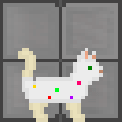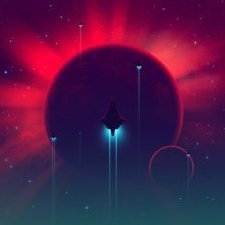Leaderboard
Popular Content
Showing content with the highest reputation on 10/19/2018 in all areas
-
In regards to balancing the gap between newbies and experienced players, and the snowballing: When you think about it, experienced shadowlings snowball out of control because not only do thralls give them more power over the crew, but more POWERS, which just adds onto their immense advantage once they've got over half their quota. Inexperienced shadowlings often have trouble getting thralls, so maybe they need a few extra powers to, if not help them thrall, make the round more interesting before they die. Maybe instead, Shadowlings should start with almost all their powers, and lose them as they get closer to their thrall goal. This way, Shadowlings are more vulnerable as they gain more thralls, and are required to actually use them as bodyguards once they get close to ascension. Say you had a shadowling needing 20 thralls. At 0 Thralls, you have all your abilities aside from ascension. After 5 thralls, you lose the Sonic Screech ability. After 10 thralls, you lose Icy Veins, Drain Life, and Glare. After 15 thralls, you lose Black Recuperation, Shadow Walk, and Rapid Rehatch After 20 thralls you ascend, with all the perks that come with it. What powers you lose and when is up to balance testing, but it would give newer players a better chance by giving them the strongest start possible, and then putting them on similar dependancy levels as experienced players once they get closer towards ascending. This may also change the dynamic of "Oh Slings are almost ascended, let's just give up" to "Slings are almost ascended, they're at their weakest now! Hit them hard!"2 points
-
A Short Introduction Much has been said about the curious specimens colloquially known as "Shadowlings" by the doomed crew of many a research station and scientific outpost. Despite the numerous encounters with the creatures, as well as a multitude of detailed after-action reports from failed Ascendance Events, very little is known about them, be it their history, behavioral patterns outside known encounters and even biology, if such a thing even applies. While officially NanoTrasen defines Shadowlings as Xenos Umbra, following in the naming scheme utilized for other creatures such as the Xenos Mutatio ("changelings") and Xenos Venenum (genus utilized for a variety of giant spider species), recent findings (Bolton & Carter, 2512) have cast doubt on the notion that Shadowlings can even be classified under the same taxonomic rules as Realspace animals, considering their innate connection to Bluespace. Curiously, it appears that the creatures have an increased interest in NanoTrasen assets and activities when compared to other companies, sovereign governments or other smaller independent polities, most likely due to the former's heavy interest in Bluespace experimentation and various active Research&Development projects dedicated almost exclusively to the weaponization of this dimension of space, hinting at their true nature. However, despite this fact, and due to the disparate sources involved in collecting data about the creatures, a full picture of their species as a whole has never been painted before, something that presents itself as a clear and present security risk for the company, its employees and its shareholders, considering the disastrous effects of Ascendance Events and the amount of damage involved. Due to this lack of a complete picture, the NanoTrasen Board of Directors has empowered me, Senior Research Director Quincy D. Huxley, to seek out and compile any information available on the Xenos Umbra, with the ultimate goal of compiling a full compendium of the sum total of knowledge available at this point in time on the creatures themselves, starting with the first recorded encounters and ending in the current day and the verifiable increase in Ascendance Events. This will most likely require vast amounts of resources; therefore, full access to a special company wallet has been granted, and a personal shuttle provided for any transportation required; this shuttle will be equipped with a small library and research laboratory, as well as a Series-17 Bluespace Restrictor Cell, meant to house exactly one (1) Shadowling specimen, should one be acquired. This will most likely be a long-term endeavour, and I have therefore terminated my current contract for the sake of proceeding with this study. Provided enough space is available, I will inquire into the possibility of recruiting additional trusted researchers. For now, however, I must gather what little data I have available, and set course for my first chosen destination. Signed, Quincy D. Huxley References: Bolton, K. D., & Carter, L. L. (2512). Anomalous readings in post-experimentation toolsets: an investigative report on Xenos Umbra effects on laboratory equipment. NanoTrasen Science Report, 4685(15542), 425-498. END LOG.1 point
-
Issues: 1. Station goals are a neat idea, but with only three different goals, they get pretty boring in practice. Once you've seen one station shield, you've seen them all. 1(a). More complicated station goals aren't easily implemented due to the extensive coding involved. You can't code a way to evaluate "put on a play" without human involvement in the loop. 2. Station goals require the entire station, which leaves you screwed over if/when Botany some other department fails to come through and renders all your hard work pointless. 3. Station goals also only involve a few departments; when the station's job is "haul some satellites into space," the entire Service department can't do much more than Advanced Thumb-Twiddling. Design Goals: 1. I'm looking to make a flexible system which provides a goal which both departments and individual jobs can strive for. 2. I want to avoid consistency: the system should have a lot of different goals, which ideally challenge people's playstyles in some way. 3. The system should reward both departments and individuals in a way which provides some bragging rights, without incentivizing them enough to make them want to game the system. Design: 1. Each department (Security, Cargo, Engineering, Medical, Science, Service) receives a specific goal from a pre-determined list. Similarly to the station goal form, the paper with the departmental goal would appear in the head's office (HoP, HoS, CMO, etc.). The departmental goal is intended to involve the primary job of the department (Engineers, Cargo Techs, etc.), with a goal such as "send back at least 20 empty crates" or "hold a pizza party." Suggestions for goals to complete are definitely appreciated (see below). 2. Individual jobs which are different from the primary department's job in some way (Geneticist, Chemist, Botanist, Mime/Clown, etc.) receive a role-specific goal which they're intended to implement. A Coroner, for instance, could receive a goal like "hold a funeral for at least one deceased individual this shift, complete with a eulogy." 3. Goal completion is evaluated by IA Agents, who can mark a department's or individual's goal as completed (I'd suggest having a particular form to fax to CentComm or something similar, to avoid complicating things). While this system could certainly be gamed, the low reward potential should keep people from gaming it for actual powergame-y reasons. And if someone wants to bribe or coerce an IA Agent into claiming they've done something good...well, that seems like perfectly decent RP, no? 4. Departments would be rewarded with a plaque or some other commendation that goes on a wall (either shipped in or stocked in the IA's office), and a minor greentext at the end under the Station Goal section ("Science Department Goal: 'Create multiple maximum-capacity bombs' - completed!"). Individuals who completed their role-specific task or contributed strongly in some other way would be rewarded with a commendation from their Head of Staff. Each Head of Staff would spawn with their own medal box in their closet, with up to three relevant medals inside (distinguished conduct for the HoP, nobel sciences award for the RD, etc.) Obviously, some medals like the 'medal for exceptional heroism' would still be Captain-only. This: a) allows for many more goals to be implemented, ranging from more conventional goals like "Engineering: repair and re-open the Med-Maint Bar" to off-the-wall stuff like "Service: serve a full-scale feast in the Bar, complete with a reconstruction of an ancient Viking longship" or "Mime/Clown: act out a scene from a Shakespearean play"), b) gives IA Agents more stuff to do and a reason to visit other departments rather than the usual interaction of "You're doing your job? Cool, keep doing that," c) improves IA's interaction with other departments, since now they can provide something good rather than just being the bearer of bad news, and d) Gives both recognition and reward to a particular department for the work they've done. Expected issues: a) People gaming the system for kicks (IA Agent being a shitter, Head of Staff pinning all their medals on themselves, etc.). I see this issue as a largely self-resolving one, since people being shitheads like this should invite enough public condemnation to limit it. b) People simply ignoring their goals. This is also a fairly self-resolving issue, since the goals themselves don't provide any major risk or reward other than a shiny plaque or medal. c) People mocking a weird goal they're given. This could be addressed by making the goal papers themselves fairly humorous ("Hey Atmos Techs, Comms Officer Steve here. So I know it's normally banned for being 'suicidally dangerous' and similar stuff, but here's what: how about you make a special room for plasmamen? I'm sure the Chief Engineer would commend you for that!"). This should hopefully provide the right tone for the goals, without detracting from the fact that they're a new and interesting thing to try on some slow round. Suggestions for departmental goals: General: -Educate new members of the team / provide public education to anyone who wants to learn about your job Medical: -Remove at least ten appendixes / install at least five MedHUD implants -Get half the crew to maximize their suit sensors / ensure the front desk is staffed during the shift Science: -Destroy the Toxins Testing Range with toxins bombs -Build a quantum-pad network connecting the station -Build and install two additional AIs / build a secondary comms array Engineering: -Complete and pressurize the Construction Site (the one east of the Engineering Outpost) -Build a new room in the Assembly Line area (theater, lounge, etc.) -Repair and re-furnish the Old Bar or Medical Maintenance restaurant Cargo: -Send at least twenty crates on the supply shuttle -Ensure that every order submitted has properly stamped paperwork -Provide every Civilian on station with a Station-Bounced Radio Role-Specific Tasks: Chemistry: Provide every other department with healing grenades / provide Engineering with at least five metal-foam grenades Coroner: Ensure all corpses are disposed of via cremation or mass-driver once autopsied Roboticist: Ensure the station has at least one 'borg with every module type before the shift ends / Build at least two Odysseus Mechs Chaplain: Provide a service dedicating the station to your god / hold at least one funeral service for any person or thing, complete with firing them out the mass driver Librarian: Create a role-playing game in the Library / provide books to all other departments Atmos Tech: Destroy at least one dangerous item in the Incinerator / create a vox-specific (or plasmaman-specific) room this shift (etc. etc. etc.) I'd appreciate any other suggestions you have to offer, especially suggestions for additional goals to complete. I'd like a large number of goals to avoid people seeing the same ones too often, so if you can think of anything else, lemme know! If the maintainers are willing to go forward with this suggestion then I'll be happy to provide the fluff for it like the department/job papers, IA's new SOP regarding inspecting and completing goals, assessing and suggesting new goals, and so on.1 point
-
⬤ ⬤ N a r ' ⚈ s i e What dark things sleep in blackened halls, Whose sister toils and sweats for days without rest! Equations seep into the walls And keep the march of time at bay. ⌼ IV.1 point
-
Field Report A-3: The New Langdon Infestation Perhaps one of the most curious events related to the Xenos Umbra was the massive infestation that took place in the colony of New Langdon between the years of 2487 and 2489; these three years, while taking a severe toll on the population in terms of physical and mental exhaustion, allowed NanoTrasen researchers and security personnel to observe and register novel behavioral patterns, chart the progression of individual power of these creatures, and first begin true inquiry into the nature of the individuals subverted by the species, commonly called "thralls". The colony of New Langdon was officially founded in 2315, on a planet christened Nuova Roma, located in the Sigma-17 binary system, and funded almost entirely by NanoTrasen, with minor contributions from private investors securing transit in the colony ship. The entirety of the population was gathered from Mars, and the new colony was to serve as an innovative, long-term commercial venture by the since-defunct NanoTrasen New Worlds Project (initially established to fund and exploit colonial ventures, but shut down in late 2425 due to rampant corruption in the administrative staff and "gigantic monetary losses" in its operation). Its initial population amounted to 5000 individuals, with more being encouraged to migrate with financial incentives and company care packages; many were relocated from NanoTrasen housing facilities to planet-side domiciles, in order to boost the population numbers. Curiously, no Bluespace research, or indeed any company-related research, was ever conducted on New Langdon, making it puzzling as to why an infestation took place in this location. Colony development is uneventful and proceeds in accordance with expected models for most of its existence, until the year of 2487 rolls over and, over the course of the first few months, a familiar pattern emerges: increased failures in the electrical infrastructure, powergrid malfunctions coupled with higher-than-average occurrences of brownouts and blackouts, and a gradually increasing number of medical complaints related to insomnia, night terrors, vivid nightmares and heightened aggression. Seeing as NanoTrasen were, at this point, already aware of the existence of the Xenos Umbra, a team of specialists was dispatched, headed by one [REDACTED]. How unfortunate. The team is listed as having been composed of seventeen Xenobiologists, fifteen security personnel armed with a surprising amount of weaponry, and a company representative meant to serve as a liaison between the team, the local colony council and the NAS Sirius, the closest NanoTrasen administrative center. The team was officially designated "Jackal Sierra", and acted mostly independently from any other entity, under the leadership of Representative [REDACTED]. Over the rest of 2487, "Jackal Sierra" worked extensively in coordination with the colony council in the installation of a newer, more distributed energy grid, training of law enforcement personnel and distribution of select amounts of classified information meant to better prepare the population for what might possibly be a public calamity of unseen proportions; with no prior incidents of Xenos Umbra infestations in large population centers, it was impossible to know what the end result would be. While it had been hypothesized that a hard "cap" existed to the amount of power one specimen could accrue before an Ascendance Event took place, no experimentation had taken place to find a definitive answer; and regardless, an Ascendance Event taking place in such a location would be a catastrophic disaster, one that would not only force NanoTrasen to publicly acknowledge the existence of the species, but would also most likely bankrupt it with the sheer costs of repaying the investments made towards New Langdon and the life insurance payoffs towards the surviving family members of anyone on the planet at the time. However, such an hypothesis would be quickly put to the test when the first confirmed sighting of a Xenos Umbra specimen was confirmed in a sewer system in late 2487, with members of "Jackal Sierra" initiating pursuit but losing track of the creature and falling back to their field HQ. After this sighting, Representative [REDACTED] issues a single message to the NAS Sirius: The wording used seems to indicate that "Jackal Sierra's" objective was not so much to help contain the infestation, but to chart its progress for the sake of increasing the knowledge pool on this species of parasites, potentially at the expense of the local population. While I cannot tell for certain, it would be consistent with future decisions made by NanoTrasen, and the relative success of the New Langdon infestation study most likely contributed to increased risk-taking on the part of the company. But I digress. Over the course of the next few months, a curious phenomenon began to arise: the number of sightings of Xenos Umbra specimens began to rise more quickly than expected, far more than what would be possible with a singular entity infestation like NanoTrasen had seen before, until, in mid 2488, "Jackal Sierra" confirms the existence of a second entity, followed by a third one three weeks later, a fourth one two weeks after that, and twelve more over the week after that. The research team's records seem to indicate a heightened state of alarm, and the number of confirmed specimens was never revealed to the colony council, instead being reported directly to the NAS Sirius; in response, NanoTrasen authorizes the activation of ERT Lambda-7 (Code Name: Last Out), their finest Gamma-level Emergency Response Team, only used in extreme, company-threatening circumstances. Lambda-7 immediately scrambles to New Langdon a mere ten minutes after activation, and sets up a secondary field HQ next to the existing one manned by "Jackal Sierra". Here, the operation takes on different, and slightly bizarre contours, with "Jackal Sierra" and Lambda-7 apparently working both in tandem, and independently, with the former attempting to capture and study live thralls and Xenos Umbra specimens, and the latter overseeing police and military training, weapons distribution and powergrid reinforcement efforts, along with leading occasional raids into suspected thrall hideouts. It is also noteworthy that, despite the number of active specimens, and the population of the colony exceeding 50,000 individuals at the time of the infestation, no more than fifty simultaneously extant thralls were ever positively identified, and the amount of Bluespace distortions that could be verified by long-range scanners barely diverged from expected, background values. Despite this, "Jackal Sierra" acquired a number of thralled individuals for study (in fact, the very first recorded use of the word "thrall" dates back to this infestation, as a means of classifying general behavioral patterns), using them as test subjects in a myriad of ad hoc tests designed to testevaluate motor function, logical thinking and emotional intelligence; curiously, while the first two remained unaffected when in comparison with unaffected members of their species, individuals thralled by Xenos Umbra specimens exhibited traits commonly associated with sociopathic individuals. Additionally, while upper brain functions remained unaffected, thralled individuals were often spotted undergoing long periods of starvation and general deprivation in order to accomplish goals presumably set by their parasitic host, with seventeen recorded cases of death by starvation, and twelve recorded instances of death by dehydration. It is also here that NanoTrasen first becomes aware of what causes the process of thralling to begin with, with MRI scans of affected individuals revealing large, tumorous growths seemingly "attached" to their frontal lobes, presumably a means for the parasitic organism to enforce its influence onto the subject's conscious mind. Much like Xenos Umbra specimens, these tumors were highly sensitive to direct light, and would quickly shrivel and melt into undifferentiated cell matter upon being exposed to direct lighting for more than a few seconds. This is also when the first recorded instances of "de-thralling" took place, and the New Langdon infestation served as the field manual for emergency "de-thralling" surgery. Eventually, in late 2488 and early 2489, Representative [REDACTED] receives a series of orders from the NAS Sirius ordering the end of any field observations, and mandating the termination of all confirmed active specimens. Over the course of the following months, Lambda-7, in conjunction with local police and military forces, launch a series of strikes against known hotspots, culminating in the destruction or capture of all known Xenos Umbra specimens, all of them terminated and subjected to intense sunlight for a period of no less than three (3) hours. The surviving corpses were encased in concrete and shipped to the NAS Sirius, where the trail grows cold. All company operations related to the Xenos Umbra threat cease in mid 2489, with no further reported cases of Bluespace distortions or infestation from the colony. Lambda-7 is officially recalled, as is "Jackal Sierra", as New Langdon celebrates Victory of Light Day. The New Langdon infestation is curious, as it never quite progressed to any level close to an Ascendance Event, despite the number of active specimens and simultaneously extant thralls. This seems to indicate that the progression of power required for such a thing to occur is fluid, rather than static, and perhaps even linked to the population size of the infestation site, which opens up a series of interesting hypotheses. Nonetheless, the infestation also informs us on NanoTrasen's increased interest in the creatures, what lengths it would go to in order to prolong an infestation to study it, and what it would do with such information; emergency "de-thralling" procedures would, from that point forward, be included in a small package of classified information reserved for on-site Captains for NanoTrasen installations, to be used at their discretion, and a series of missives from company HQ in Sol indicate the establishment of a special sub-division of NanoTrasen's Xenobiological Research Division dedicated entirely to locating and studying Xenos Umbra specimens. This sub-division, aptly code-named "Shade in the Sun", was based on the NSS Ragnarok, and continues to operate mainly from there to this day. This is my next destination. Signed, Quincy D. Huxley END LOG.1 point
-
Field Report A-2: The NSS Discovery Incident The NanoTrasen Science Station Discovery remains as one of the company's darkest and most well-hidden mysteries, one that remains secured behind Authorization Level Epsilon to this day; I myself was only authorized to peruse through existing logs due to the nature of my investigation, and even then was forbidden from directly quoting any part of them, being forced to utilize indirect references and "close-enough" paraphrasing. With construction beginning in 2401 and ending in 2432, the NSS Discovery was the first in a new series of research station design iterations that would eventually culminate in the Cyberiad-Pattern Research Station design. The Discovery was set to become the very first NanoTrasen-owned installation dedicated entirely to Xenobiological studies. To that end, it was equipped with multiple decks of reinforced containment cells, several high-tech Hydroponics units and approximately three times more weaponry and riot control gear than most other research installations extant at the time of its inaugural shift. Its final location was chosen to be the Tau-56 system, located in the far reaches of the Tau Fringe, next to a star cluster notable for its high incidence of Earth-like planets inhabited by unique fauna and flora. It operated from 2432 to 2498, after which it was officially declared "Missing Under Suspicious Circumstances". The loss was designed as "Category C", ostensibly standing for "Catastrophic", considering the amount of resources and personnel invested into the facility. While officially NanoTrasen has never provided a reason for the Discovery's disappearance, the "unofficially accepted" explanation is that it was destroyed via unauthorized activation of the on-board Nuclear Failsafe Device, ostensibly installed in order to prevent hostile takeover by the part of any hostile entities, sentient or not. However, the few records that do exist in regards to the Discovery do not support this hypothesis, as no radiation bursts were detected from its last known location, and no debris belonging to the station was ever found. For all intents and purposes, the station disappeared, and was not simply destroyed. However, the last two shifts recorded as having taken place aboard the NSS Discovery shed a light on the most likely reason for the facility's vanishing: a successful Ascendance Event. Approximately sixteen hours before all communication with the Discovery ceases, the second-to-last ever shift begins with no incident. Research into captured Xenos specimens continues as programmed, with only a few minor scuffles reported by on-site Security staff, ostensibly over a "rigged" arcade machine that on-site Engineering staff had installed in the cantina. However, approximately eleven hours before communications cease, just beyond the halfway point of the shift, several abnormalities in the station's power grid are reported, with several departments issuing formal complaints with the on-site Chief Engineer, one James Blasky, over the constant brownouts experienced by the crew. No abnormalities with the Singularity Engine are reported, and Engineering officially explains the power grid failures as being the result of faulty wiring. Despite extensive repairs over the course of the rest of the shift, powergrid issues persist without being resolved, and Chief Engineer Blasky officially faxes the NAS Karakorum (attendant administrative center to the NSS Discovery) requesting the following shift be equipped for more in-depth repairs of the grid, including potential SMES unit replacements. The rest of the shift proceeds without other incidents. However, at the beginning of the following (and final) shift, the NAS Karakorum issues a notification to the NSS Discovery, warning on-site captain, Melinda Bernstein, that a crewmember from the previous shift, one John Berkeley, never reported at the end of their work period, and that a full search of the station was mandatory in order to ascertain their whereabouts. Captain Bernstein indeed orders on-site Security staff to search the station for Mr. Berkeley, to no avail. Powergrid issues persist, and in fact worsen throughout the first half of the shift, until an odd report on the part of the on-site Cook has Security staff investigate the walk-in freezer, where they find multiple slabs of meat missing, along with one of the back doors being hacked open. Security is unable to follow any trail, but comms chatter logs indicates that Security staff suspected it was the work of the missing crewmember. Approximately three hours before communications cease, all lights within the Medical Department simultaneously fail, plunging the area into darkness for approximately ten minutes before Engineering staff respond with enough replacements. All contact with medical personnel ceases past this point, and Medbay goes into lockdown. On-site Security staff respond by issuing an arrest order for the on-site Chief Medical Officer, one Andrew Adams, and issuing Riot Control gear to multiple officers. Approximately two hours before communications cease, the NSS Discovery's powergrid shuts down, plunging the station into complete darkness. On-site Engineering staff do not respond to this, claiming they were evacuating and citing multiple encounters with hostile entities in the maintenance tunnels around Medbay and within the department proper. Command-level comms chatter is rather confusing, and it seems that the administrative staff was never quite aware of what was happening, believing the situation to be some sort of mutiny, up until approximately one hour before communications cease, when Captain Bernstein issues a request for an Emergency Response Team, citing an infestation by unknown lifeforms that had, to their best of their knowledge, consumed most of the Medical and Engineering staff. The NAS Karakorum scrambles ERT Gallia-15, a Red-Level Emergency Response Team composed mostly of close combat specialists and accompanied by three medics. Upon boarding the NSS Discovery, approximately 15 minutes before communications cease, Gallia-15 reports that all on-site comms chatter has died down, and that none of the facility's electronics appeared to be functional, the team being forced to use emergency crowbars to force open depowered airlocks in order to progress. Gallia-15 reaches the Discovery's Bridge, only to find it empty, and the Captain's office ransacked. Gallia-15 reports this to the NAS Karakorum, presumably the reason why an unauthorized nuclear activation is believed to have been the cause for the disaster, the on-site Authentication Disk being missing. At this point, approximately 5 minutes before all communications cease, Gallia-15 reports a loud scream that seemed to be audible throughout the entire station. Following this message, Bluespace distortions severely compromise communications with Gallia-15, with the last few words audible in the logged recordings speaking of red eyes, Bluespace teleportation and large mobs of brainwashed crewmembers. Eventually, all communications with Gallia-15 cease, and no further messages are received from the NSS Discovery from that point forward. With no further information to work with, the NAS Karakorum authorizes activating ERT Mercury-3, a Gamma-Level Emergency Response Team. Mercury-3 would deploy to the last known location of the Discovery, only to find all traces of it had disappeared. Despite searching the Tau-56 system and surrounding star cluster, no signs of the station, or debris belonging to it, were ever found, and NanoTrasen officially files the "Missing Under Suspicious Circumstances" notice 3 standard days later, followed by classifying all information pertaining to it as Authorization Level Epsilon, despite the lack of any hard evidence concerning any tangible, known threats. However, NanoTrasen's actions betray an already budding interest in the Xenos Umbra threat, as the disappearance of the Discovery occurs several years after the company was made aware of the species' existence, and follows many of the patterns exhibited by known and recorded Ascendance Events, such as frequent powergrid issues, lighting system malfunctions and progressive subversion of the crew, in addition to frequent mentions of red eyes and brainwashing, not to forget the massive amounts of Bluespace distortions both reported by Gallia-15 and recorded on long-range scanner arrays. This seems to indicate that early action taken towards these creatures involved an attempted suppressing of information, rather than dissemination and study. To this end, I will need to attempt to identify similar attempts at censoring vital information, and seeing where they may lead me, then attempt to ascertain what caused a shift in attitude towards these creatures, seeing as modern NanoTrasen policy both acknowledges the existence of the creatures, and actively encourages its research divisions to acquire as much information as possible about them. Signed, Quincy D. Huxley END LOG.1 point
-
Field Report A-1: Resource Acquisition Site Romeo-19 While the shuttle I've been assigned is anything but comfortable, it does the job it was designed to do. As I was informed, it possesses all the amenities required for a long-term field study, as well as the facilities necessary to keep me alive and well-fed for the foreseeable future. On a further positive note, a fully furnished and supplied Autolathe and Cyberiad-Pattern Protolathe have been installed on a last minute recommendation by the overseer assigned to pre-flight maintenance; this should mean that if I do not possess a tool for the job at hand, I can simply make one. This will most likely make things extremely simpler, as the stylish sunglasses I'm now wearing most definitely prove. Nevertheless, I digress. The first officially recorded contact with a Xenos Umbra specimen occurred in 2389, though previous, unrecorded encounters have not been ruled out at this moment (it being likely that, given the apparently supernatural abilities of these creatures, precious encounters may have been passed down through tales of "Shadow People" present in various cultures across the galaxy), in Resource Acquisition Site Romeo-19, my very first destination. It is currently a sprawling industrial complex built around a city-sized asteroid, and located within the asteroid belt surrounding CHA-12312B, the G-class star of the Lambda-15 system. Its current assigned goal is the exploitation and strip-mining of the asteroid belt, and it currently produces mostly Titanium and Plasteel for delivery to the Tau Fringe and the Omicron Core Worlds. However, at the time of First Contact, it was little more than a series of hastily-pressurized habitation blocks connected by umbilical tubes that were prone to failure and malfunction, something that cost the lives of 37 personnel during the initial construction period, which lasted from 2387 to 2391. Full mining operations only began in 2493, and expansion of the facility only began in earnest in 2446. The encounter with the specimen, heretofore referred to as U-1, is therefore poorly logged in company records, having occurred in a barely functional construction site staffed entirely by low-grade miners and only a half dozen trained engineers. For this reason, I have traveled to the complex myself, where I met with Chief Engineer Aaron Kemsley, current on-site Chief of Operations. Thankfully for my research, on-site records have been well kept in backup hard copies, and Dr. Kemsley permitted me access to the databanks for the duration of my stay. The findings, while minuscule in comparison with future ones, nonetheless shed a much-needed light on the early history of NanoTrasen's involvement with these creatures, and their methods (or lack thereof) to combat possible infestation. Anomalous reports first began appearing in early 2388, with the construction staff reporting multiple power outages, unusually frequent light fixture malfunctions and, eventually, high incidence of migraines, insomnia and nightmares in the staff. As the situation degraded, and multiple individuals began issuing formal complaints with the site's engineers, then-current Chief of Operations, one Michael Brattis, requests emergency medical aid from the NCS Venture, the nearest NanoTrasen installation, located in the Lambda-13 system. Due to the relative unimportance of the construction site at that time, along with the lack of trained medical personnel on-board the Venture, the request went unheeded for approximately 3 STT (Standard Terran Time) months, during which the medical condition of the construction staff deteriorated further. Eventually, as a team of emergency medical personnel arrived, the continued operations aboard Romeo-19 were deemed unfeasible; on-site Staff were evacuated and construction was halted until a replacement team was found. The original crew, which had been working on-site since the start of the construction process, made a full recovery, but refused to return, citing "horrible things" happening to them in their sleep, but refusing to elaborate further. The trail grows cold, as the records proceed to the next staff rotation. Is it notable that NanoTrasen does not seek to investigate these complications further, as no reports of further inquiries into these medical conditions are logged. The issues present with the first rotation carried on with the second one, with early 2388 logs reporting a much quicker-acting onset of nightmares and night terrors, along with several incidents of miners disappearing during work hours and reappearing several hours later with little to no memory of the time lost. One of the miners, one Robert Proudhon, would never return, though his corpse (or what became of it) would be found later (see below). This would carry on throughout the following standard weeks until, at a certain point, on-site Chief of Operations Sarah Carver sends the following message to the NCS Venture: The records show the reason for this message: earlier in the work shift, one of the mining teams reports spotting an "unidentified creature" in one of the deeper mining tunnels. One of the miners reports having spotted a "hole full of resin", which was quickly ordered to be torched. What happens afterwards is unknown, but the next communication arrives approximately 5 minutes later, with the mining team reporting having killed a "black humanoid thing", specimen U-1, which was quickly dumped into a deeper tunnel. After evacuating the mining site and sealing the entrance, construction is once again halted until reinforcements from the NCS Venture arrive. Further expeditions into the mining tunnels revealed that the resin was made of an hitherto unknown material, and that the corpse of U-1 was dressed in the tatters of a uniform reminiscent of the one used by on-site construction crew. An ID Card was never found, but odds are good that U-1 was, in fact, Proudhon, having transformed into a Xenos Umbra specimen. The Security team from the Venture is recorded as having safeguarded the corpse, which was brought off-site by a team of scientists from the NSS Shiva, the closest research installation with Xenobiological research facilities. The trail disappears after this point, but on-site medical complaints ceased following this incident, and RAS Romeo-19 proceeded with regular operations as scheduled, with Robert Proudhon still officially marked as "Missing" in company records. It is worth nothing that the dispatched team of Scientists recorded the corpse of U-1 as being covered in a "layer of light-reactive chitin", and possessing "remarkable regenerative qualities", though further inquiries into the possible origin of this creature were not performed. This incident provides some information on possible infestation methods, as it is clear that none of the members of the initial staff rotation were turned into a Xenos Umbra specimen, but suffered through the same symptoms as the second rotation, which produced U-1. This may indicate that whatever causes the transformation, be it a viral agent, bacterium or Bluespace anomaly, it is capable of affecting a geographical area independent of any host, with the actual infestation and transformation occurring afterwards, a pattern repeated throughout history in regards to these creatures. It is also an indicator of NanoTrasen's attitude towards them, as the corpse was immediately sent for further study. It is, however, impossible to follow the trail to the NSS Shiva, as it was decommissioned in 2485, and all on-site records erased from company databanks. The next step is still unknown to me. More research is required. Signed, Quincy D. Huxley END LOG.1 point
-
Author of fastmos, which is an addition to Linda. Our atmos is a few years behind the other code bases, in both features and performance. The throwing mechanic makes it appear faster, but the reality is, its super expensive to do tile by tile calculations, which means that to make it spread faster, we would have to increase the rate at which it calculates all active tiles. So essentially, short of porting Bay or TGs system, this is about as good as we will be able to get. Considering that byond is single threaded, this is extremely unlikely to change in the future. Its a known limitation of our atmospherics system. Anything short of a port of a more modern system will not change this dynamic. As far as the 24 minute thing goes, before fastmos, our atmospherics system was 4 times slower. So um, that would be 100 minutes.1 point
-
Paradise station github is here, where you're more than welcome to contribute to improving it ? https://github.com/ParadiseSS13/Paradise1 point
-
Problem with RP / non engineering objectives: The problem with non-engineering/science objectives is confirming whether or not they have been completed without admin checking. I.e., it can be automatically checked if they have been completed. This means that RP based objectives or ones which involve no specific construction can't easily be checked. Solution? Have it so command can call in a station inspector (like an ERT) to come and check that it has been completed. They can come on the ERT shuttle, observe whatever has been completed or done, read the reports / pictures and then head back to the ERT base. They can then press a button on a new computer back where they came from at ERT base to confirm objectives complete. This way no admin involvement is required as it can be confirmed/denied in-character and it would give an extra role (or multiple roles) for those who have died to get back into the game. That way we could have silly non-engineering objectives. Some ideas: Possible objectives: (1) Put on a play to raise morale (HoP responsibility) (2) Organise a fun fair for tourists (Clown/Chef/Bar responsibility) (3) Build and populate a biodome (Biology/Engineering responsibility) (4) Establish a successful colony (Everyone's responsibility) (5) Implement a rehabilitation program and successfully rehabilitate three offenders (Security/HoP/Magistrate/HoD responsibility) (6) Hold a full station trial with jury (Security/HoP/Magistrate/Journalist responsibility) (7) Run an apprenticeship program in all departments so each has to hire and train a cadet in a new role (Everyone's responsibility) (8) Install toilets in each department (Shitty objective) (9) Replace Cloning with a pod-person programme (Botany/Genetics etc.) (10) Ensure the station is spotless and without any mess (impossible objective) Having inspectors would open the station up to bribes, or worse - what would happen if an EOC got one? Oh no!1 point
-
Humanitarian Crisis A nearby planet/space station is suffering from a natural disaster and urgently requires aid. NT has taken a contract to supply said aid, now it falls on the crew to provide it. To fullfil this goal, you need to sent to CC via the cargo shuttle the following items (mostly in boxes) X calories/points worth of meals, giving the chef and botany something to do. Y points worth of medical supplies/medicine, provided by chemistry. 2 Oddys, for search and rescue. 2 Ripleys, for construction work and rescuing people from under rubble. (can probably extend this list quite a bit more) Now, I don't how how the cargo shuttle code works but it shouldn't be that hard to have it detect those things being sent away on the shuttle and adding them to a total, right? Maybe send a fax to the bridge with a running tally of how many points/etc were delivered and how many are still lacking.1 point
-
Nukies spent about an hour devising a plan on how to stealthily and quickly get in, powersink the station, assault bridge, activate the nuke and leave. Long story short, after we spent an hour coming up with a plan, half our squad just fucked off before the sink was set up. Nobody besides me bought an emag. So I used mine, while holding a gun in the other hand. The following acts transpired within aproximately 3 and a half minutes: Emagged into HOP's Office. Emagged into the conference room. Emagged into the bridge. Put my Emag away, grabbed a flashbang, activated it with Z. Finger slipped on X. Throw intent active from the flashbang. Have gun-holding hand selected. Throw my rifle into the captains face like some retard. Get flustered. Press X real quick to switch to the flashbang. Try throwing. Throw intent isn't on. Press R. Fatfinger E. Put flashbang into backpack. Flashbang goes off inside. Kill captain. Leave bridge with other Nukies. Get robusted by a single sec officer and the AI firelock crushing me. Macrobomb implant takes out most the bridge and part of the hallway. Deadchat: "Well, that didn't go well." "Were you the asshole that threw a gun at the Captain instead of shooting him?" I'll never play nukie again.1 point








